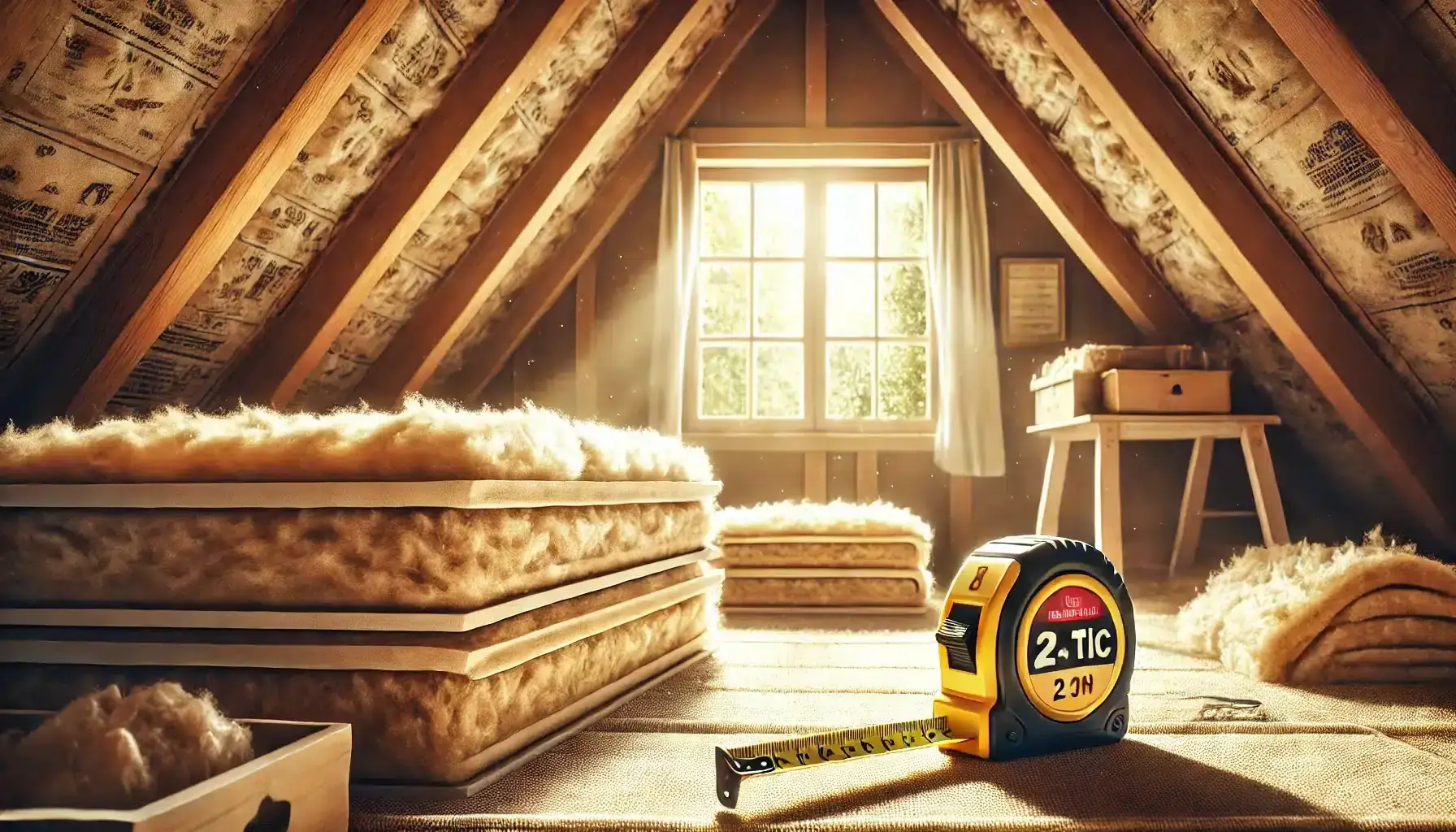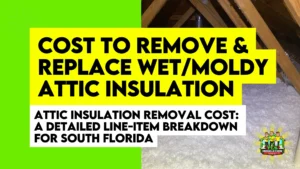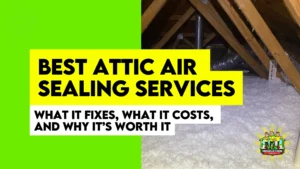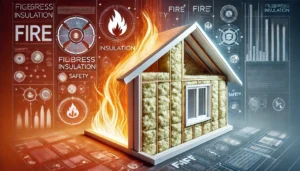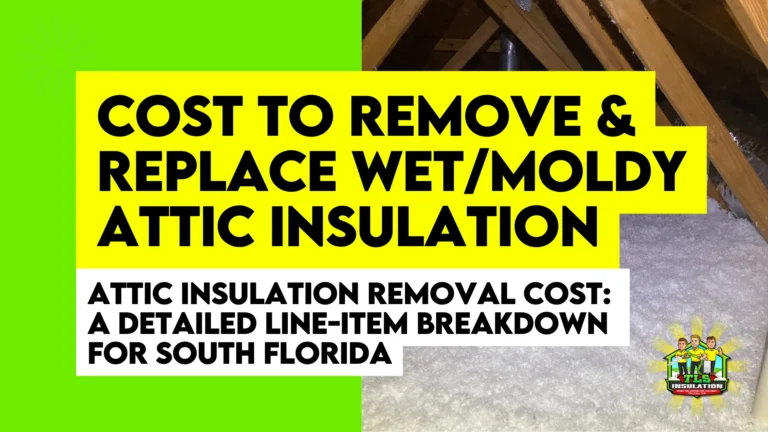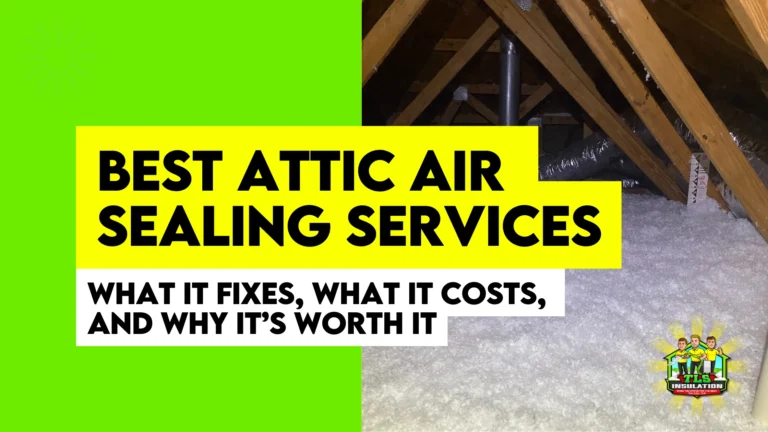According to the U.S. Department of Energy, properly installed and adequately measured insulation can reduce energy bills by up to 20%, but it’s crucial to tailor the amount to your specific needs.
So, planning an attic insulation? Don’t know, how much insulation do I need in my attic?
Technically, the effectiveness of insulation in your attic will depend on several factors, including the R-value of the insulation material, your home’s climate zone, and the type of insulation used the more isn’t always better.
We can simply extract a conclusion that increasing your attic insulation thickness doesn’t guarantee enhanced temperature control or energy efficiency. Contrary to this, over-insulating can lead to problems like moisture accumulation and poor ventilation raising concerns.
For example, over insulating blown-in insulation not only raise performance and settlement concerns but also raise the cost to blow insulation in attic.
So when you think of stuffing too much insulation in attic in search of energy efficiency, this blog will uncover all the dynamics of insulating your attic in a better way.
How Much Insulation Do I Need In My Attic: Lets Compare the Factors
Just before you start searching for an expert company for your attic insulation, some of that factors you need to understand
Determine your climate zone to find the recommended R-value. For example; According to the U.S. Department of Energy’s climate zone map for specifics, for Climate Zone 1-2 (Hot): R-30 to R-49 Insulation thickness is recommended. R-38 to R-60 for Climate Zone 3-4 (Mixed), and
Climate Zone 5-8 (Cold) requires R-49 to R-60.
Also, measure your existing attic insulation thickness to calculate the right amount of additional insulation required.
| Insulation Material | R-Value per Inch | Recommended Total R-Value | Approximate Thickness Required | Key Features | Best For |
|---|---|---|---|---|---|
| Fiberglass Batts | R-2.9 to R-3.8 | R-38 to R-60 | 10″ to 16″ | Easy DIY installation, affordable, fits standard joist spacing | DIY projects, standard attics |
| Blown-In Cellulose | R-3.2 to R-3.8 | R-38 to R-60 | 10″ to 16″ | Excellent at filling gaps, made from recycled materials | Irregular or hard-to-reach spaces |
| Spray Foam Insulation | R-3.5 (Open-cell) / R-6.0 (Closed-cell) | R-38 to R-60 | 6″ to 17″ (varies by type) | Superior air sealing, moisture barrier, higher cost | Maximum energy efficiency, moisture control |
| Blown-In Fiberglass | R-2.2 to R-2.7 | R-38 to R-60 | 14″ to 24″ | Quick installation, covers large areas effectively | Large attics, professional installation |
| Mineral Wool | R-3.0 to R-3.3 | R-38 to R-60 | 12″ to 20″ | Fire-resistant, sound-dampening properties | Attics requiring fire resistance |
| Reflective Insulation (Radiant Barrier) | Reflects radiant heat | Used in addition to other insulation | N/A | Reduces heat gain in hot climates, installed on attic underside | Hot climates, supplemental insulation |
The Science of R-Values: How Many Inches of Insulation in Attic Is Recommended:
By definition, insulation reduces heat flow between your home’s interior and exterior by resisting thermal energy transfer. So, R-value measures an insulation material’s resistance to heat flow—the higher the R-value, the better the insulation’s thermal performance.
Now how to achieve the right R-value? Determining your climate zone to find the recommended R-value is important. For example, In regions like Florida with hot and humid climates (Climate Zone 2), the U.S. Department of Energy recommends an attic insulation depth achieving an R-value between R-30 to R-60. This typically requires 10 to 20 inches of insulation in the attic, depending on the material used. So Knowing how many inches of insulation is recommended in your attic? Consulting the climate zone is crucial for optimizing energy efficiency and controlling moisture in high-humidity areas.
Assessing Your Insulation Needs: How Thick Should Attic Insulation Be
One of the important factors regarding how thick should attic insulation be is assessing your existing Insulation condition and type. Homeowners can make informed decisions about attic insulation, leading to significant reductions in energy consumption and utility bills
Evaluating Existing Insulation Levels
To determine your attic insulation needs, begin by measuring your current attic insulation depth. Experts suggest an easy way of using a ruler to see how many inches of insulation in the attic you have.
Different insulation materials like fiberglass, cellulose, spray foam insulation have varying R-values per inch. For instance, fiberglass blown-in offer an R-value of approximately R-2.2-2.7 per inch. But still in this case, consulting a local blown-in insulation company or knowing your existing insulation levels helps you calculate the right amount of additional insulation required to achieve optimal energy efficiency.
Key Factors Influencing Insulation Requirements
Climate and Location
Your home’s climate zone significantly affects the recommended insulation R-value. The U.S. Department of Energy suggests different insulation levels based on regional climates. For example, taking an example of different Floridan parts;
- Areas like Phoenix, Arizona, where intense heat is a major concern, the recommended attic insulation R-value ranges from R-30 to R-60. Achieving this requires an attic insulation depth of approximately 10 to 20 inches, depending on the insulation material used. Materials like radiant barriers or reflective insulation can also help reduce heat gain.
- Similarly, In frigid areas like Fairbanks, Alaska, classified under Climate Zone 8, the U.S. Department of Energy recommends an attic insulation R-value of R-49 to R-60. This high R-value combats substantial heat loss during long, cold winters. An attic insulation thickness of 16 to 20 inches of materials like fiberglass insulation or spray foam insulation may be necessary.
Home Age and Construction
Older homes may lack proper insulation due to outdated building codes. Homes built before the 1980s often have minimal attic insulation, leading to higher energy bills and poor thermal performance. Assessing your home’s construction type can identify opportunities for energy savings through upgraded insulation material.
Building Codes and Standards
Adhering to local building codes ensures compliance and optimizes energy conservation. Codes specify minimum insulation R-values and are influenced by regional temperature zones. The International Energy Conservation Code (IECC) provides guidelines that many states adopt.
Calculating the Right Amount of Attic Insulation Depth and Thickness
Measuring Your Attic Space
To determine how much insulation you need in your attic, start by measuring the square footage of your attic space. It’s one of the factors to estimate attic insulation cost by square foot. Use a tape measure to record the length and width, then multiply these figures to calculate the total area. Accurate measurements ensure you purchase the right amount of insulation material for your attic thickness needs.
Determining the Desired R-Value
The required R-value depends on your climate zone and local building codes. For example:
- Climate Zones 1-2: Hot Climatic Areas like Miami, Florida requires r-Value R-30 to R-38
- Climate Zones 3-4: Moderate Climatic Areas like Atlanta, Georgia requires r-Value R-38 to R-49
- Climate Zones 5 -8: Cold Climatic Areas like Minneapolis, Minnesota requires r-Value R-49 to R-60
Consult the U.S. Department of Energy’s R-Value Recommendations to identify the optimal insulation R-value for your region.
Attic Insulation Thickness Requirements by Material and R-Value
| Insulation Material | R-Value per Inch | Thickness for R-30 | Thickness for R-38 | Thickness for R-49 | Pros | Cons |
|---|---|---|---|---|---|---|
| Fiberglass Batts | R-3.2 | 9.5 inches | 12 inches | 15 inches | – Easy DIY installation – Widely available |
– Can leave gaps if not installed properly – Lower R-value per inch |
| Blown-In Cellulose | R-3.5 | 8.5 inches | 11 inches | 14 inches | – Excellent at filling gaps – Made from recycled materials |
– Can settle over time – May absorb moisture if exposed |
| Open-Cell Spray Foam | R-3.6 | 8.5 inches | 10.5 inches | 13.5 inches | – Good air sealing – Acts as moisture barrier |
– Higher cost – Requires professional installation |
| Closed-Cell Spray Foam | R-6.5 | 4.5 inches | 6 inches | 7.5 inches | – Highest R-value per inch | – Much higher cost – Requires professional installation |
| Mineral Wool | R-3.3 | 9 inches | 11.5 inches | 15 inches | – Excellent air and moisture barrier – Fire-resistant, good sound-dampening properties |
– More expensive than fiberglass – Less commonly available |
Step-by-Step Calculation Guide For Insulation Thickness in Attic
- Measure Your Attic Area: Calculate the total square footage by multiplying the length by the width.
- Determine Required R-Value: Refer to your climate zone recommendations for the ideal insulation R-value.
- Select Insulation Material: Choose an insulation material for attic thickness that meets your needs.
- Calculate Required Thickness: Divide the desired R-value by the material’s R-value per inch to find the necessary thickness. For Example: For R-38 using fiberglass batts (R-3.2 per inch):
- Thickness Required = R-38 ÷ 3.2 per inch ≈ 12 inches
- Assess Existing Insulation: Subtract the R-value of any existing insulation to avoid installing too much insulation in the attic.
- Estimate Material Quantity: Multiply the required thickness by the attic area to determine how much material to purchase.
- Plan Installation Method: Decide between DIY installation or hiring professionals based on the material and complexity.
Frequently Asked Questions
How thick should blown-in insulation be?
The recommended attic insulation depth for blown-in insulation typically ranges from 10 to 14 inches, depending on your desired R-value and climate zone.
What is the thickness of R-38 spray foam insulation?
To achieve an R-38 rating with closed-cell spray foam insulation (R-6.5 per inch), you need approximately 6 inches of thickness.
What is the best insulation material for attic spaces?
The ideal insulation material for your attic depends on factors like climate, budget, and energy goals, but common choices include fiberglass batts, blown-in cellulose, and spray foam insulation.
Can you have too much insulation in your attic?
Yes, installing too much insulation in your attic can impede ventilation, leading to moisture issues and reduced thermal performance.
What is the recommended attic insulation depth?
The recommended attic insulation depth varies by region but generally falls between 10 to 20 inches, aiming for an R-value of R-30 to R-60 based on your climate zone.


